The 10 Largest Football Stadiums in the World
Football is the most popular sport in the world. Millions of people watch games live, either on television or in person, every week. There are thousands of football stadiums in the world, small, medium, and large, where fans go and watch their sides play in the hope of taking three points.
One of the most awe-inspiring things about football is how big and extravagant some of the stadiums are. From North Korea to Spain, some venues are so large that they can hold so many people that it’s hard to believe. In this article, we’ll look at the top 10 biggest football stadiums in the world. Some of which you may never have even heard of.
10. Borg El Arab Stadium – Egypt
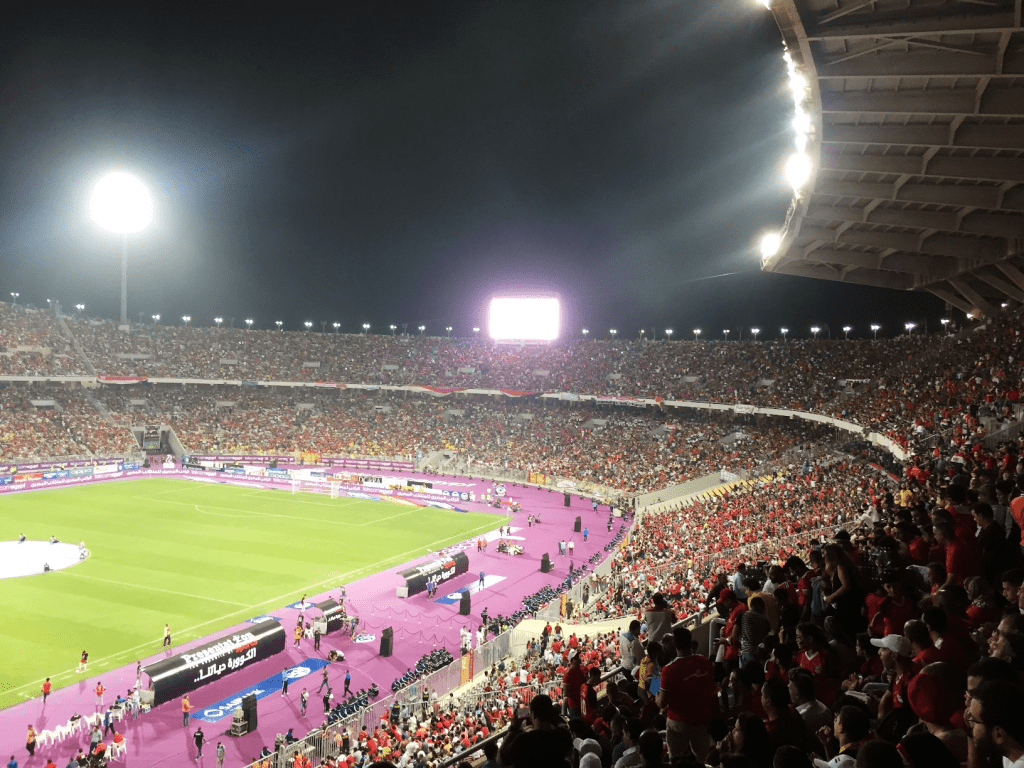
- Team: Egypt National Team
- Country: Egypt
- Capacity: 86,000
With a seating capacity of 86,000, the Borg El Arab Stadium in Borg El Arab, near Alexandria, Egypt, is the largest stadium in Egypt and the second largest in Africa. The stadium was completed in 2005 and opened to the public in 2007. It has an all-seat capacity and is air-conditioned in various areas to fight the region’s harsh weather conditions. The stadium has played host to a number of high-profile events, including the opening and final matches of the 2006 Africa Cup of Nations. This stadium is also home to Egypt’s national football team, and it has become a significant part of the country’s sporting history.
9. Bukit Jalil National Stadium – Malaysia

- Team: Malaysia National Team
- Country: Malaysia
- Capacity: 87,411
The Bukit Jalil National Stadium, located in the National Sport’s Complex in Kuala Lumpur, Malaysia, is a multi-purpose stadium with a seating capacity of 87,411 people. It is the largest stadium of its kind in Southeast Asia and the second-largest in Asia. The stadium was built on January 1, 1995, and opened on September 11, 1996, to host the 1998 Commonwealth Games. It has a nine-lane, 400-metre synthetic track along with a 68-metre by 105-metre grass pitch, making it an athletic ground besides being a football field. The stadium is owned by the Malaysian Government and operated by the National Sports Complex. It is the home ground of the Malaysian National Football Team and has hosted several high-profile events, including the Commonwealth Games, Southeast Asian Games, and more. The Bukit Jalil National Stadium is a significant landmark in Malaysia’s sporting history and continues to attract sports fans from around the world.
8. Estadio Azteca – Mexico
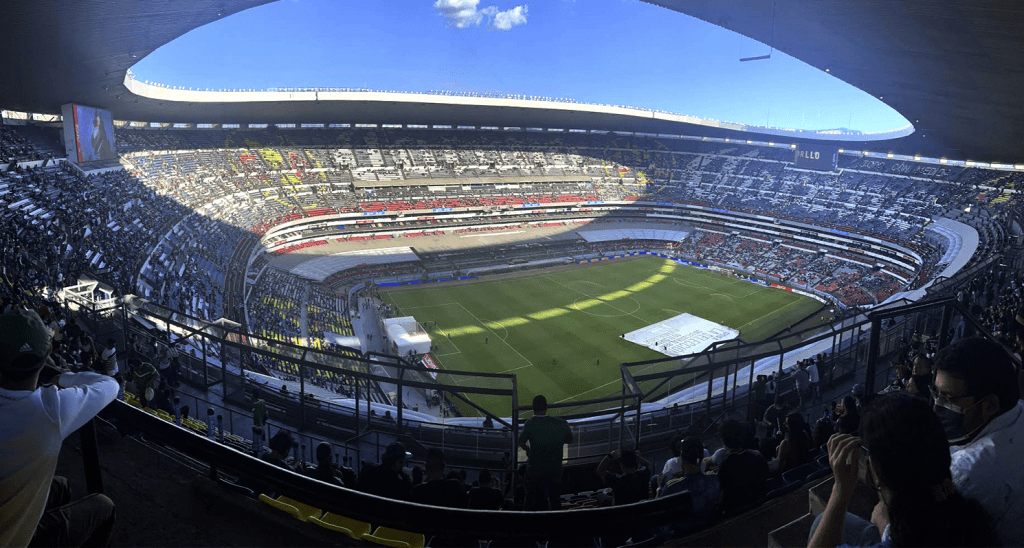
- Team: Club América, Cruz Azul, Mexico National Team
- Country: Mexico
- Capacity: 87,523
The Estadio Azteca is a multi-purpose stadium in Mexico City, Mexico, and is one of the world’s largest and most recognised stadiums. It is the official home of the Mexican national team as well as the football clubs Club América and Cruz Azul. The stadium was envisioned as a prominent sports arena under Adolfo López Mateos’ presidency when Mexico was awarded the 1968 Summer Olympics, when the football final took place.
Pedro Ramrez Vázquez and Rafael Mijares Alcérreca, architects, created the stadium in 1961. On May 29, 1966, Club América and Torino F.C. played in front of 107,494 fans in the stadium’s opening match. The stadium nowadays has a capacity of 87,523, and is located at an elevation of 2,200 metres (7,200 feet) above sea level. It is the largest stadium in Mexico and Latin America, as well as being one of the eight largest association football stadiums in the world. The 1968 Summer Olympics, the 1970 and 1986 FIFA World Cups, and the 1986 quarterfinals were all held in the Estadio Azteca.
6. Rose Bowl – United States
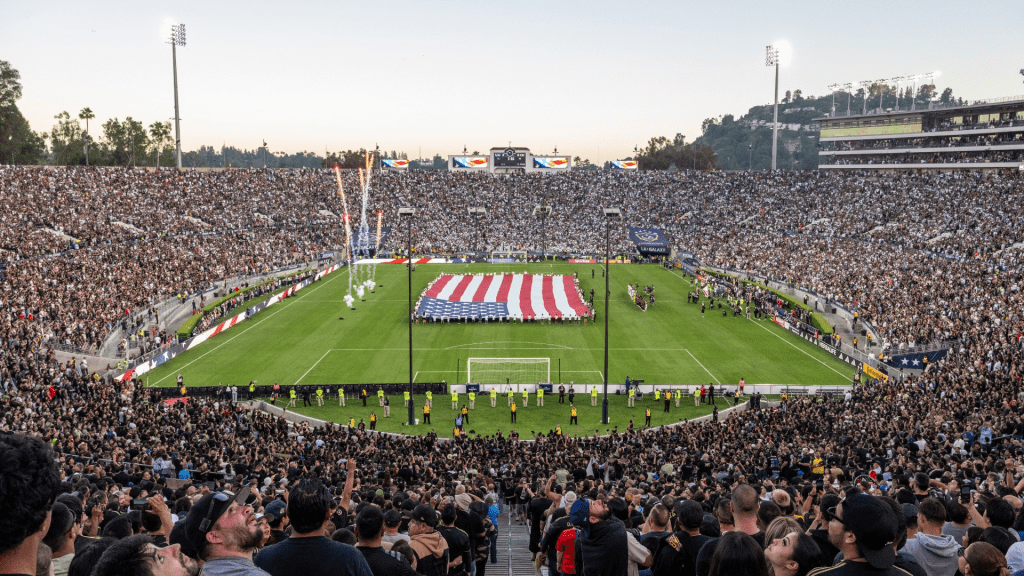
- Team: No permanent football team
- Country: United States
- Capacity: 88,565
The Rose Bowl is an outdoor athletic stadium located in Pasadena, California, and is recognised as a National Historic Landmark and a California Historic Civil Engineering Landmark. The stadium has a seating capacity of 102,083 for American Football games and 90,888 for Football matches. The stadium has hosted several high-profile events, including five Super Bowl games, the 1994 FIFA World Cup Final, and the 1999 FIFA Women’s World Cup Final. The Rose Bowl doesn’t have an MLS side that plays their games in it, but it has hosted L.A. FC for some of their fixtures in the Leagues Cup, so they could host a larger crowd than their normal capacity.
6. Wembley Stadium – England
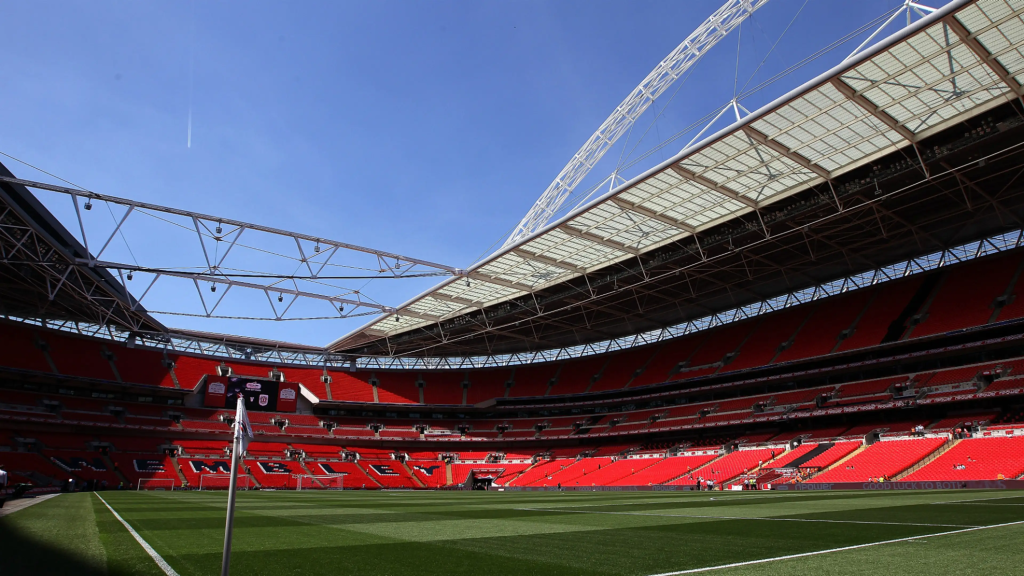
- Team: England National Team
- Country: England
- Capacity: 87,000
Wembley Stadium is the national stadium of England and the home of English football, located in London, England. With a seating capacity of 90,000, it is the largest stadium in the United Kingdom and the second-largest stadium in Europe. The stadium boasts a retractable roof and a 133-meter-high arch that serves as the world’s tallest single-span roof support structure and can be seen from all around London. Wembley Stadium first opened in 1923 and was demolished in 2002 to make way for the current stadium, which opened in 2007. Several high-profile events have taken place at the stadium, including the 1966 World Cup Final, the 1948 Summer Olympics, and the 2015 Rugby World Cup. It is also the established home of the NFL in the United Kingdom. Wembley Stadium is an important milestone in England’s sporting history, attracting fans of sports from all over the world.
5. FNB Stadium – South Africa

- Team: South Africa National Team
- Country: South Africa
- Capacity: 94,736
The FNB Stadium is a multi-purpose stadium in Nasrec, Johannesburg, South Africa. It is also known as Soccer City and The Calabash. The stadium is home to the South African Premier Soccer League’s Kaizer Chiefs F.C. and hosts major matches for the South African national football team. The stadium was built in 1989 and refurbished in 2009 in preparation for the 2010 FIFA World Cup, when it hosted the final and closing ceremonies. The stadium has a seating capacity of 94,736, making it Africa’s largest. The stadium’s outer façade is intended to mimic an African pot, with a mosaic coating in fire and earthy colour combinations. The FNB Stadium is an important monument in South African athletic history, attracting sports enthusiasts from all over the world.
4. Melbourne Cricket Ground – Australia
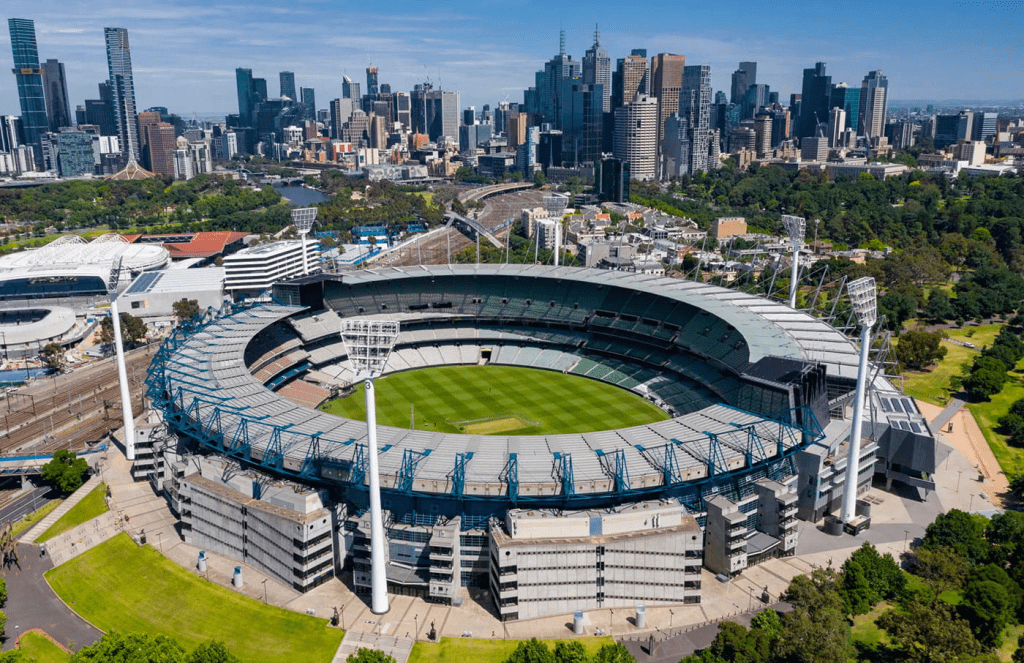
- Team: No permanent soccer team
- Country: Australia
- Capacity: 100,024
The Melbourne Cricket Ground (MCG), popularly known as “The G,” is a multi-purpose stadium in the Melbourne suburb of Yarra Park, Victoria, Australia. It is the largest stadium in the Southern Hemisphere, the 11th largest stadium in the world for all sports, and the second largest cricket pitch in terms of capacity. The stadium, which is within walking distance of the city centre, is home to the Melbourne Cricket Club. Since its inception in 1853, the MCG has undergone various restorations and has hosted a number of high-profile events, including the 1956 Summer Olympics, the 2006 Commonwealth Games, and two Cricket World Cups.
The Melbourne Cricket Ground (MCG) is most known for hosting cricket matches, but it also has a long history of staging high-profile football events. From hosting the 1956 Melbourne Olympics soccer final between Yugoslavia and the Federal Republic of Germany to more recent events such as the 2015 International Champions Cup featuring giants such as Real Madrid, Manchester City, and AS Roma, the stadium has displayed soccer’s global appeal. The MCG also hosted the 2015 FFA Cup Final, where Melbourne Victory won 2-0 over Perth Glory. Also, it has hosted a number of international football matches with the Australian national team, including World Cup qualifiers and friendlies.
3. Camp Nou – Spain
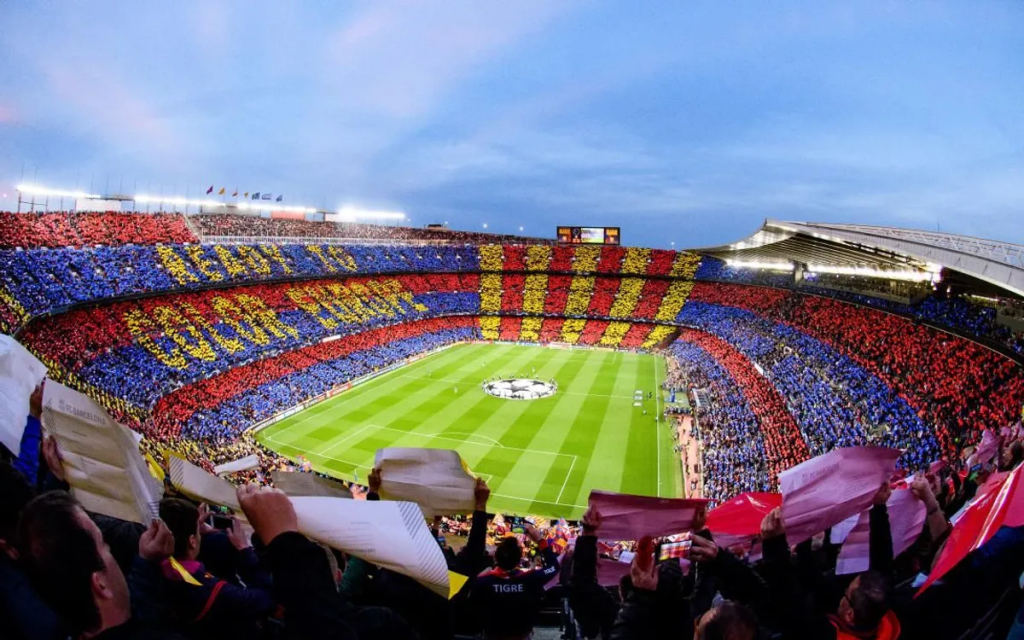
- Team: FC Barcelona
- Country: Spain
- Capacity: 99,354
- Info: Home to FC Barcelona, Camp Nou is the largest stadium in Europe.
Everyone knows about the Nou Camp. Barcelona’s stellar stadium, which has hosted some of the world’s biggest football events and some of the world’s best football talent, has hosted Lionel Messi, Andres Iniesta, Xavi Hernandez, and Sergio Busquets over the years. The Nou Camp is the largest football stadium in Europe, and Barcelona is currently expanding it’s capacity to 105,000 seats.
2. Michigan Stadium – United States
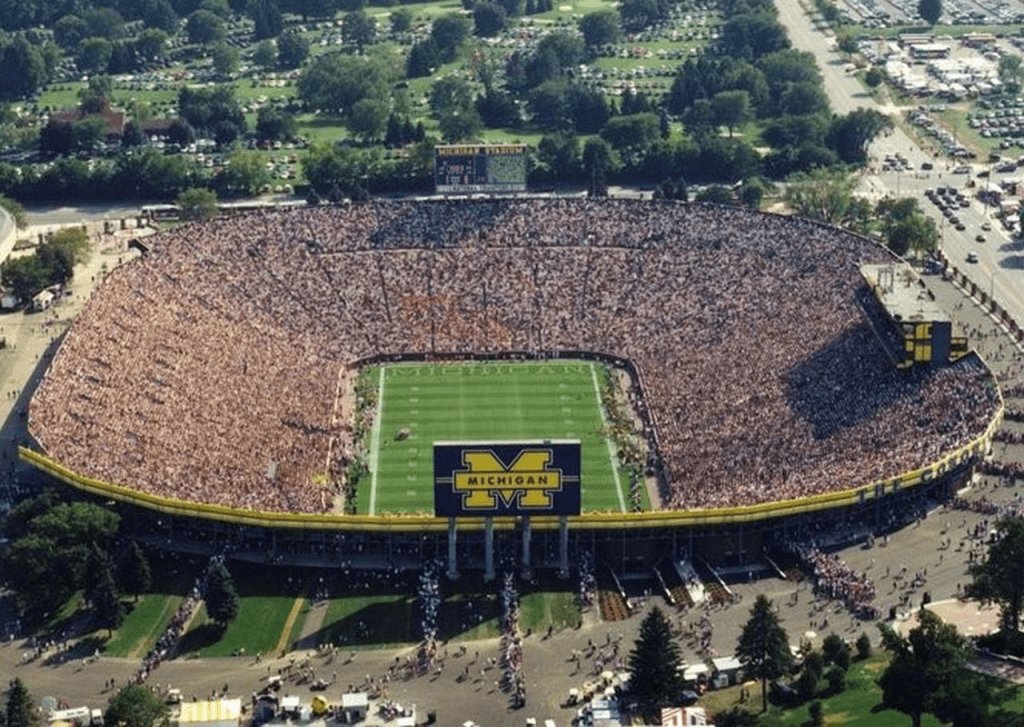
- Team: No permanent soccer team
- Country: United States
- Capacity: 107,601 (it has hosted crowds in excess of 115,000)
Michigan Stadium, also known as “The Big House,” is primarily used for American football games, particularly those involving the University of Michigan Wolverines. The stadium, however, has also hosted other sporting events such as football and ice hockey. The International Champions Cup (ICC) football tournament has visited the stadium four times, including a match between Real Madrid and Manchester United in 2014, which set an American attendance record with 109,318 people. Michigan Stadium has even broken attendance records for ice hockey games. In front of 105,491 spectators, the stadium hosted the NHL’s 2014 Winter Classic, where the Toronto Maple Leafs defeated the host Detroit Red Wings. As a result, Michigan Stadium has previously hosted football matches, including international matches.
1. Rungrado 1st of May Stadium – North Korea’s Stadiums
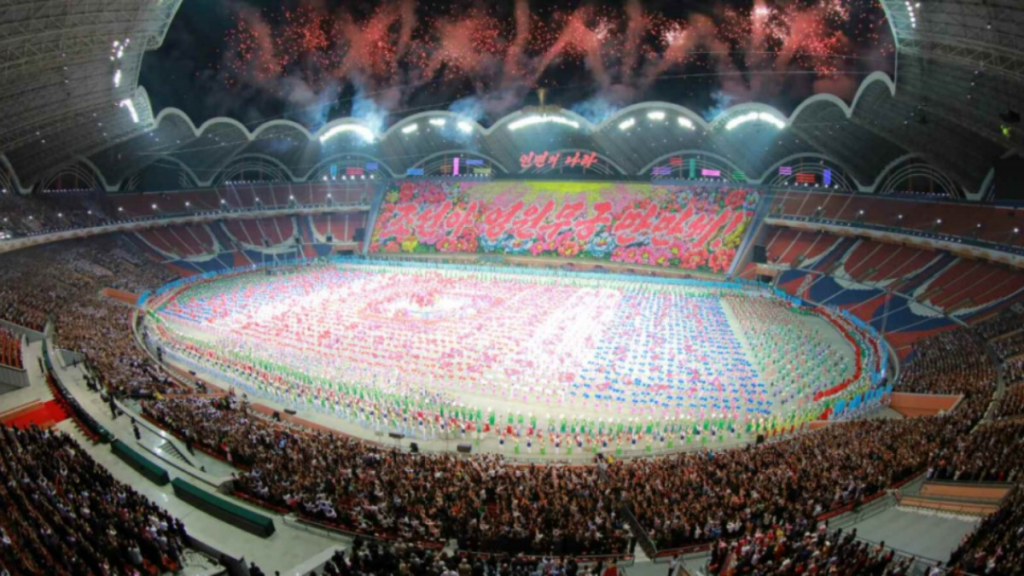
- Team: North Korea National Team
- Country: North Korea
- Capacity: 114,000
The Rungrado 1st of May Stadium is a multi-purpose stadium on Rungra Island in Pyongyang, North Korea. It officially opened on May 1, 1989, with the 13th World Festival of Youth and Students as its first major event. The stadium has a seating capacity of 114,000, making it the world’s second-largest stadium by seating capacity (after India’s Narendra Modi Stadium) and the biggest venue that hosts football. The stadium covers an area of 20.7 hectares (51 acres) and has a total floor space of more than 207,000 m2 (2,230,000 sq ft). The main pitch measures 22,500 m2 (242,000 sq ft) and can easily accommodate three full-size football fields.
The stadium has 80 entrances, and the North Koreans claim that 150,000 people can fill it in 15 minutes. The stadium is used for a variety of purposes, the most common being sporting events. Football matches are common, and the North Korean national football team plays its international matches in this stadium. Every year, several athletic events are held in the stadium. On April 28th and 29th, 1995, the stadium hosted the most people. The “Collision in Korea” pay-per-view event was the first professional wrestling event held in North Korea, and it drew 190,000 people over two days.
Figures reported from North Korea, should always be questioned as they can’t be validated.
Conclusion
In conclusion, the world has some of the most incredible and stunning stadiums, some of which can hold hundreds of thousands of fans. From North Korea’s Rungrado 1st of May Stadium to Spain’s Nou Camp, these stadiums have hosted some of the biggest sporting events in history. Some of these stadiums have been in use for generations, while others have fallen into disrepair and are now only relics of what they once were. Nonetheless, these stadiums continue to fascinate and stimulate sports fans all over the world, and their legacy will live on for future generations.








